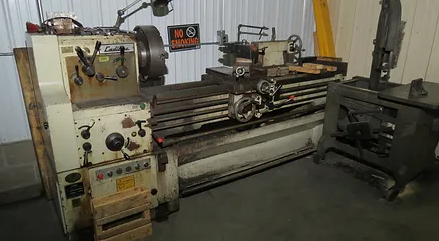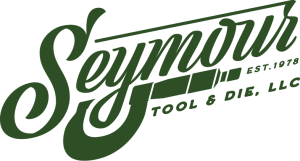An engine lathe is an essential machining tool designed for shaping and modifying cylindrical workpieces. This type of lathe is fundamental in a variety of manufacturing settings, where precision and manual control are vital. The main components of a manual engine lathe include the bed, headstock, tailstock, spindle, carriage, and toolpost, each playing a critical role in the machine's operation.
Manual engine lathe models
Several models of manual engine lathes are available, each with specific dimensions and capabilities suited to different machining needs:
CADILLAC 16" x 60"
The CADILLAC engine lathe offers a blend of size and power, making it adept at handling medium to large workpieces. This model is versatile enough to accommodate a wide array of machining tasks. It is particularly well-suited for operations requiring substantial material removal or intricate detailing, providing reliable performance across diverse manufacturing projects.
JET 16" x 60"
Mirroring the size of the CADILLAC, the JET engine lathe excels in both durability and precision. Its superior control makes it an excellent choice for industrial projects where consistent output is critical. The JET model handles a wide variety of workpieces and is a versatile tool for numerous applications.
SUPERMAX 10" x 36"
The SUPERMAX engine lathe is engineered for precision and efficiency, making it an ideal choice for projects that demand meticulous attention to detail on smaller components. This engine lathe works well for custom fabrication projects that require a high degree of finesse.
WACHEON 22" x 60"
The WACHEON engine lathe is capable of handling larger, heavier workpieces. This model is built for heavy-duty tasks with extensive manufacturing processes. It can withstand the rigors of intense industrial use while maintaining high precision and performance capabilities.

HOW A MANUAL ENGINE LATHE WORKS
The engine lathe process begins with the workpiece being securely mounted between the headstock and the tailstock.
The spindle, which is activated and controlled by the headstock, spins the workpiece at selectable speeds. These speeds can be finely adjusted to suit the specific material being worked on, as well as the precise requirements of the task.
As the workpiece rotates, the machinist skillfully maneuvers the carriage along the engine lathe's bed. This movement allows for the strategic positioning of cutting tools, which are held in the toolpost.
Through careful manipulation, the machinist applies these tools to the workpiece, removing material to sculpt the cylindrical object to the desired specifications and finish.
FREQUENTLY ASKED QUESTIONS
Manual Engine Lathes
When is a manual engine lathe preferable to a CNC machine?
What is a manual engine lathe capable of?
What are some common pieces produced by manual engine lathes?
What materials can a manual engine lathe machine?
Can you make complex pieces with a manual engine lathe?
Contact Seymour Tool & Die
Interested in our precision machining services? Contact us today with any questions, comments, or suggestions about your job and what we can do for you.
 11416 Wilson Road., North East PA
11416 Wilson Road., North East PA 
